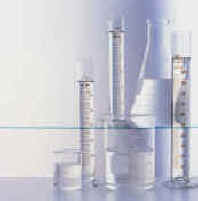 |
| ||||||||
 | ||||||||
 We hope you find the information on this website useful. Please feel free to contact us and we will be pleased to answer any questions you may have. Click on Contact to send a message or request further information. |
Deposition Systems Jerry Barker Consultants has considerable expertise in using and developing both Electrodeposition and Electroless deposition systems. Our team has more than 15 years hands-on industry experience working in these important technological areas. Use our team to develop novel solutions for your deposition requirements. Electrodeposition may be used for deposition of metal, alloy, semiconductor or advanced materials. Electroless deposition systems are almost exclusively used for metallic deposition, but our organization also has considerable experience in the emerging area of Electroless deposition (Chemical Bath Deposition) of compound semiconductors. Electrodeposition (plating) is used extensively in the metallic coating, decorative finishing, corrosion protection and engineering industries. Jerry Barker Consultants can offer a range of solutions to meet your electrodeposition requirements. We specialize in the design, development and operation of deposition systems such as those used to deposit metallic coatings, alloys and semiconductors as well as electroactive materials for battery applications. Yet another growth area for electrodeposition is in development of metallic contacts for semiconductors. Jerry Barker Consultants has extensive knowledge of the chemistry of electrodeposition baths, plating hardware and software control. If required we also have the skills necessary to theoretically model your deposition system. Electrodeposition of Semiconductors. The methods normally used to deposit semiconductors (e.g. CVD, MO-CVD, MBE) are relatively complex, requiring expensive equipment and often using toxic chemical intermediates. In contrast the electrodeposition method offers a novel technique utilizing low cost capital equipment and readily available and non-toxic precursors. In addition, electrodeposition allows excellent control of the deposition process, whereby properties such as the compound stoichiometry, surface morphology and crystallinity may be readily varied. In recent years, improved control methods have allowed successful electrodeposition of compound semiconductor materials such as CdTe, CdSe, CdS and ZnTe. Jerry Barker Consultants has many years experience working in this industry. As an example of our expertise in this area, Dr. Barker is the named co-inventor on one of the most important and ground-breaking patents describing electrodeposition of ultra high purity II-IV compound semiconductors. He has also published and presented extensively on this subject. This technology has developed into a new and exciting application of electrodeposition. BP Solar is currently using this process in its thin film photovoltaic production facility in Fairfield, California. Electrodeposition of Metals on Semiconductors. This really is a growth area. Electrodeposition of metallic contacts to n- and p-type semiconductors offers a relatively fast and cost effective alternative to the more traditional high vacuum techniques normally encountered (e.g. evaporation, sputtering etc). Novel plating solutions, hardware and deposition conditions have been devised to meet these special requirements. However, successful deposition of nickel, copper, gold as well as more exotic metals and alloys have recently been demonstrated at a commercial scale. Jerry Barker Consultants has particular experience in the challenging environment of electrodeposition of metallic contacts to thin film semiconductors. These are now used extensively in the photovoltaics industry. Electroless Deposition Background. Electroless deposition systems can be very elegant. In the reduction process, the electrons are supplied by a reducing agent present in the plating solution. Dependent on the nature of the metal to be deposited the reducing agent employed may vary. Typical reducing agents include sodium hypophosphite, sodium borohydride, hydrazine and dimethylamine borane (DMAB). Materials that may be deposited by an electroless method include nickel, copper and gold as well as binary and ternary alloys. Recent advances have seen the emergence of so-called 'Electroless' methods for deposition of compound semiconductors, such as CdS and CdTe. By strict definition these methods are nor truly electroless but are really controlled precipitation techniques, and are more correctly described as 'Chemical Bath Deposition' methods. Jerry Barker Consultants has considerable experience and expertise in both electroless and chemical bath deposition methods. This specialized knowledge extends to deposition formulations and control hardware necessary to deposit a range of materials, including semiconductors. Electroless Deposition of Metals on Semiconductors. This is an important and emerging technology. Controlled electroless deposition of metals onto elemental or compound semiconductors is important in all areas of semiconductor technology including wafer interconnection and photovoltaics. Nickel and copper are particularly important, although more exotic metals and alloys may also be considered. Jerry Barker Consultants can assist your organization in developing processes and hardware to harness this important and cost effective technology. Electroless Deposition of Compound Semiconductors - Chemical Bath Deposition. The Chemical Bath Deposition (CBD) method is gaining general acceptance as a very cost effective method for the controlled deposition of semiconductors. The CBD method is not a true electroless process, but rather depends on the controlled precipitation of reactants. Compound semiconductors that may be deposited successfully by the CBD approach include the II-IV materials such as CdS, ZnTe and ZnS. These materials are useful, for example, as window layers in thin film photovoltaic devices and as optical detectors. Typically, uniform layers of < 2000 ┼ may be readily deposited on various substrates such as ITO and SnO2 coated glass. Success has also be made with direct electroless coating of these materials on top of other compound semiconductors to form p-n junction devices. Dr Barker has worked extensively on developing CBD processes and systems, including formulations and deposition methods aimed at depositing novel semiconductor layers. Some of these systems are currently in commercial production. Let Jerry Barker Consultants use this expertise to assist your organization in exploiting this most useful and under estimated deposition method.
|
Background
|
| Copyrightę 2002-2010
Jerry Barker Consultants Limited. Registered in England and Wales, Company No: 7095860 |